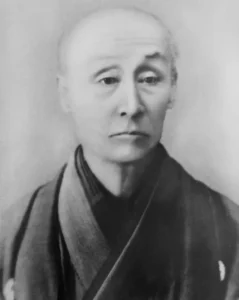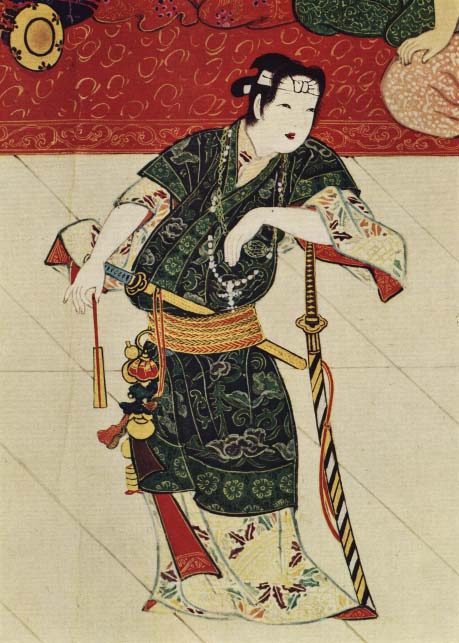What is Nihon Buyō?
The History of Hanayagi-ryū

Hanayagi Yoshijirō I
The Hanayagi-ryū School of Classical Japanese Dance was founded in 1849 by Hanayagi Yoshijirō. Originally a disciple of Nishikawa Senzō IV and famous for the choreography he lent to countless kabuki productions, most notably the plays Kanjinchō and Funa Benkei, Yoshijirō performed under the Hanayagi name for the first time in April 1848 at the Nakamura-za kabuki theatre in Edo. He assumed the name Hanayagi Jusuke I as the founding iemoto (headmaster) of the school; the lineage of this name continues with the school’s current iemoto, Hanayagi Jusuke V.
Today, nihon buyō (classical Japanese dance) is dominated by five major schools, each with their own distinctive styles. The Hanayagi-ryū school of classical Japanese dance is the largest of these five, with an estimated 20,000 licensed members.
Foundations of Nihon Buyō
Though nihon buyō was formalized during the Edo period (1603–1867 C.E.), it takes inspiration from and perpetuates a much longer history. In the Kojiki (“Record of Ancient Matters,” 712. C.E.), Japan’s oldest written record, mai (dance) is said to have been invented by the goddess Amenouzume-no-mikoto, whose creations set the foundation for the traditions of kagura and noh. In the 17th century, a shrine maiden named Izumo no Okuni is credited with creating kabuki dance in Kyoto. She led an exclusively female dance troupe whose popularity raised the ire of shogun Tokugawa Iemitsu, who forbade women from performing publicly in 1629. From this point, the newly-formed kabuki theatre would be performed only by men, and by the Genroku era (1688–1704) kabuki had expanded to the dramatic art form we know today.
The late Edo period saw kabuki choreographers refine their expertise in the realm of dance and branch off to establish their own institutions; this is how modern nihon buyō was born, and explains the close link between the kabuki and nihon buyō repertoires. A number of the artformʻs most well-known performances, including Shiokumi, Tenaraiko, Sagi Musume, and Kyōkanoko Musume Dōjōji are classified as kabuki-buyō, originating as dance segments made for the kabuki stage.

The Music of Nihon Buyō
Many nihon buyō performances are accompanied by nagauta, one of the most prominent genres of shamisen music. Created to serve as the main musical accompaniment to kabuki narratives, nagauta are structured as a series of short, thematic poetic fantasies that were historically performed together in hours-long performances called hengemono, in which dancers would singlehandedly portray a breathtaking array of characters in one performance. Other genres of shamisen music include kouta and hauta (short melodic ballads), kiyomoto, tokiwazu, and gidayū (narrative dramas, or jōruri, characterized by emotive and dynamic storytelling), and yamatogaku (a new genre created in the early 20th century that incorporates Western harmonies into traditional shamisen arrangements, and is known for its freedom of expression).
Nihon buyō is notable for being indiscriminate of gender or age, and for the way it incorporates elements from various other art forms, including noh, kyōgen storytelling, and bunraku. Many pieces feature tales, events, and characters that predate the inception of nihon buyō, and illustrate how dance has come to be an invaluable vehicle for perpetuating Japanese cultural heritage. HDAHF hopes to introduce modern audiences to the richness of traditional Japanese storytelling through our activities.